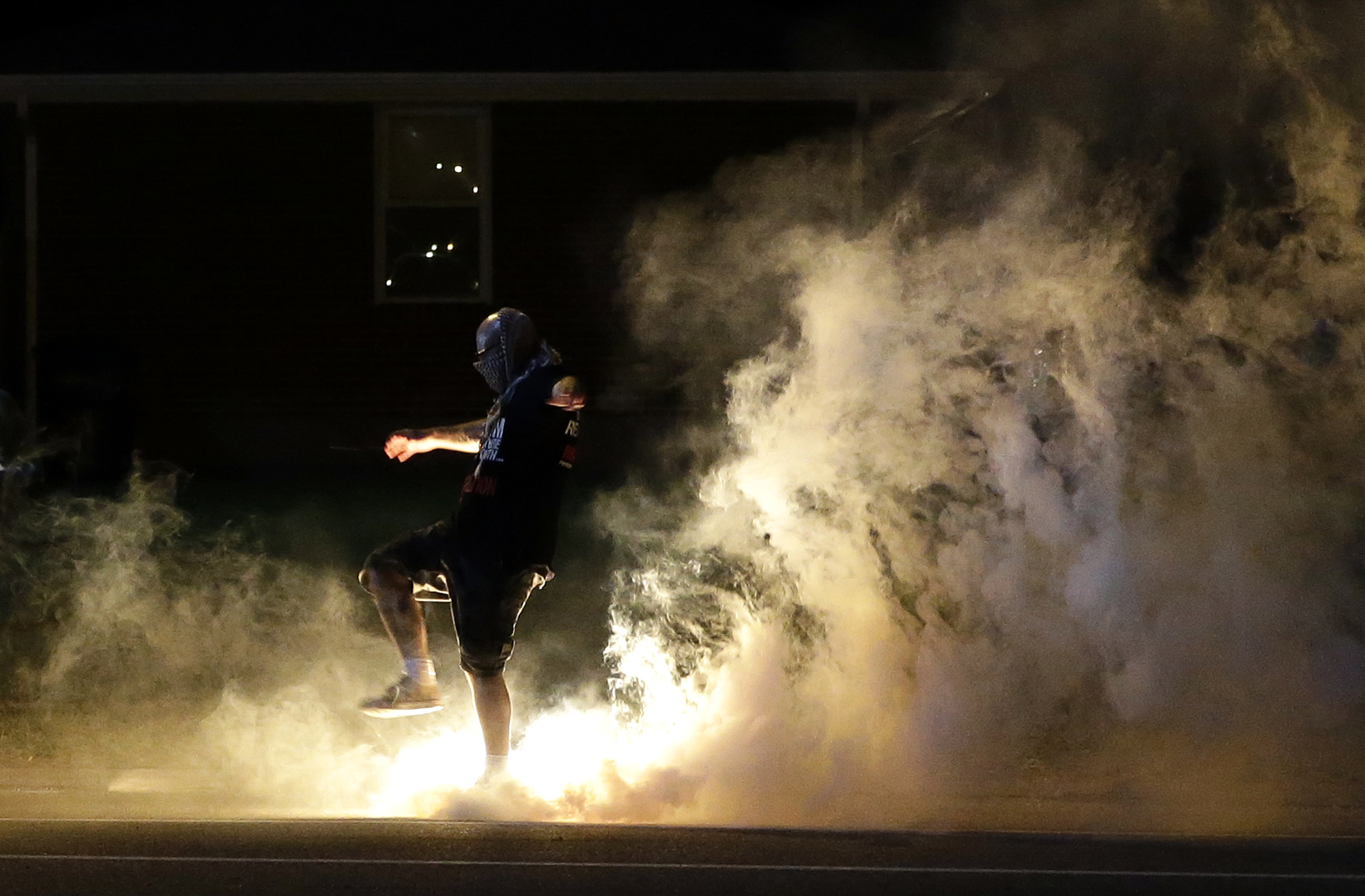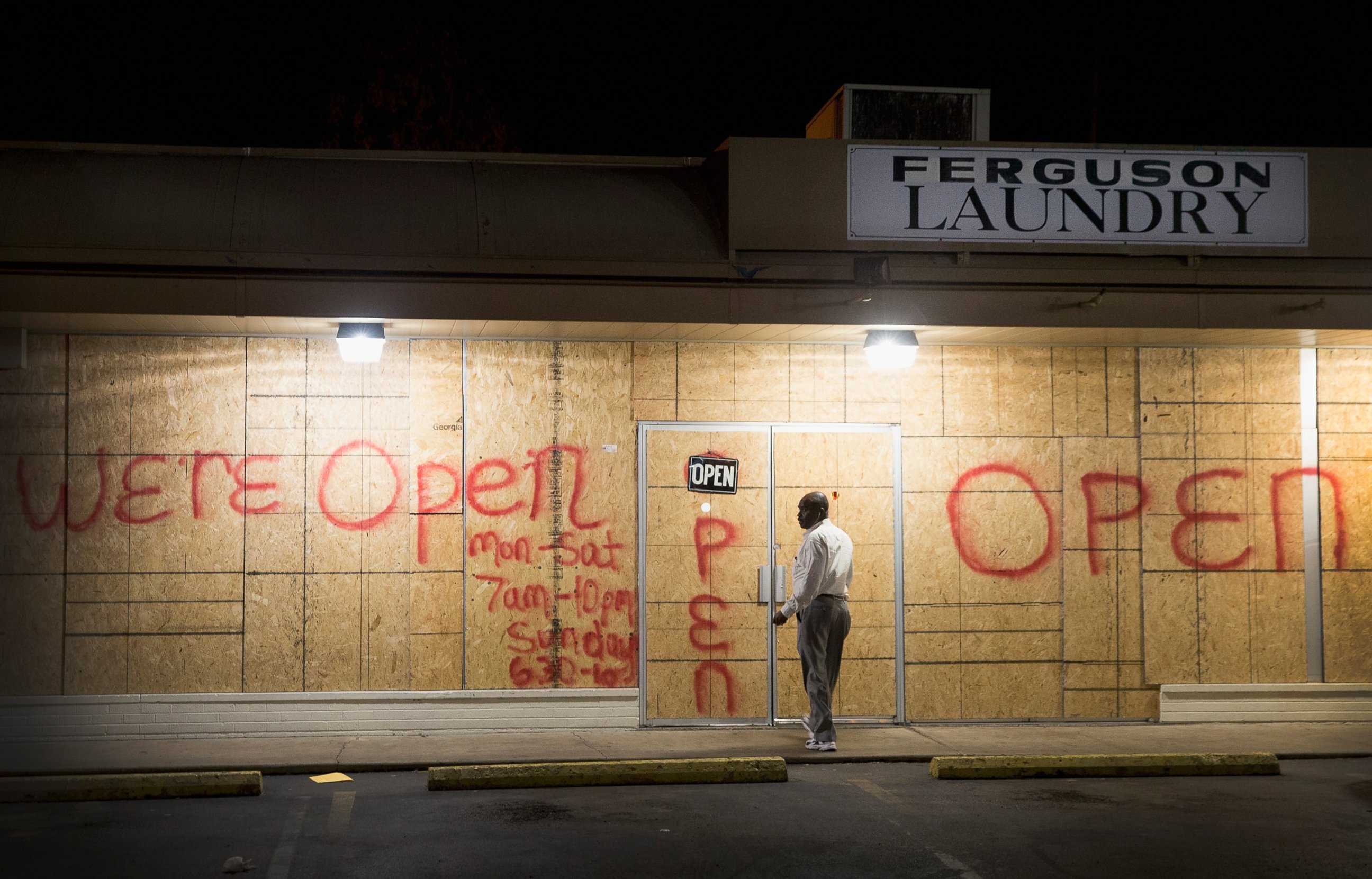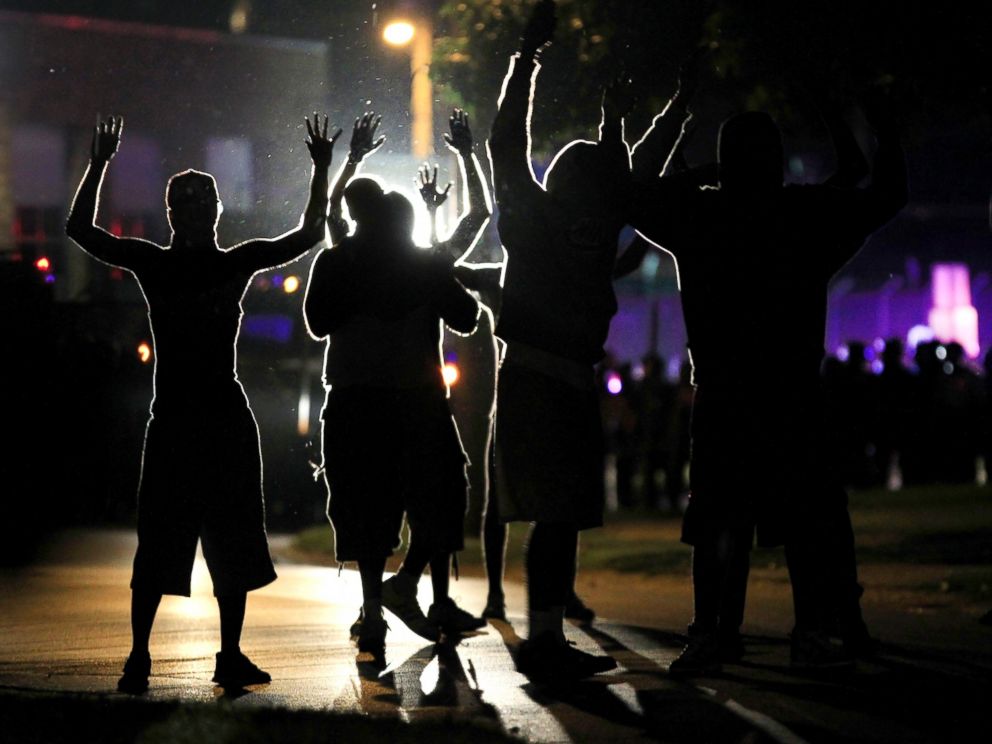FBI Warns Ferguson Decision ‘Will Likely’ Lead to Violence By Extremists Protesters
"All it takes is one..."
— -- As the nation waits to hear whether a Missouri police officer will face charges for killing unarmed teenager Michael Brown in Ferguson, Mo., the FBI is warning law enforcement agencies across the country that the decision “will likely” lead some extremist protesters to threaten and even attack police officers or federal agents.
Peaceful protesters could be caught in the middle, and electrical facilities or water treatment plants could also become targets. In addition, so-called “hacktivists” like the group “Anonymous” could try to launch cyber-attacks against authorities.
“The announcement of the grand jury’s decision … will likely be exploited by some individuals to justify threats and attacks against law enforcement and critical infrastructure,” the FBI says in an intelligence bulletin issued in recent days. “This also poses a threat to those civilians engaged in lawful or otherwise constitutionally protected activities.”
"Those infiltrating and exploiting otherwise legitimate public demonstrations with the intent to incite and engage in violence could be armed..."
The FBI bulletin expresses concern only over those who would exploit peaceful protests, not the masses of demonstrators who will want to legitimately, lawfully and collectively express their views on the grand jury’s decision.
The bulletin “stresses the importance of remaining aware of the protections afforded to all U.S. persons exercising their First Amendment rights of freedom of speech and freedom of assembly.”
Within hours of the FBI issuing its bulletin, some police departments across the country issued their own internal memos urging officers to review procedures and protocols for responding to mass demonstrations.
Still, the bulletin’s conclusions were blunt: “The FBI assesses those infiltrating and exploiting otherwise legitimate public demonstrations with the intent to incite and engage in violence could be armed with bladed weapons or firearms, equipped with tactical gear/gas masks, or bulletproof vests to mitigate law enforcement measures.”

The bulletin cites a series of recent messages threatening law enforcement, including a message posted online last week by a black separatist group that offered “a $5,000 bounty for the location” of Ferguson police officer Darren Wilson, who fired the shots that killed Brown on Aug. 9.
In interviews with ABC News, police officials said their departments have identified a number of agitators who routinely appear at mass demonstrations.
“How many of those sympathizers are actually sympathizers?” Rick Hite, the chief of the Indianapolis Metropolitan police department, wondered. Many of them see the protests as a way to “chime in with their own personal agenda,” he said.
In its new intelligence bulletin, obtained by ABC News, the FBI says “exploitation” of mass demonstrations “could occur both in the Ferguson area and nationwide.”
"All it takes is one."
Overall, though, law enforcement officials contacted by ABC News – stretching from Los Angeles to the Atlanta area – remained confident that any protests in their cities would not be tainted by violence.
“We are not expecting any issues in our city,” said Billy Grogan, the chief of police in Dunwoody, Ga., outside Atlanta. “However, we are preparing just in case. I believe most departments are watching the situation closely and are prepared to respond if needed."
A law enforcement official in Pennsylvania agreed, saying that while authorities there are not enacting any significant new measures they are “monitoring” developments out of Ferguson.

In a recent interview with ABC News, Philadelphia Police Chief Charles Ramsey said people in “communities of color” often “don’t view us as people who really have the right to enforce laws or tell them what to do,” and sometimes it’s because of “the way they’ve seen us conduct ourselves in the past.”
“Not all cops, but all it takes is one,” Ramsey said. “As human beings, we tend to remember the one bad incident, not the 10 good ones that we may have experienced.”
On the other side of the spectrum, there are some uncomfortable facts that may be influencing how some police respond to African-Americans they encounter on routine patrols.
In particular, African-Americans are disproportionally represented in crime. According to the FBI, 4,379 blacks were arrested for murder last year, while 3,799 whites were arrested for murder – even though census numbers show there are six times more whites than blacks in the United States.
But as Ramsey said, crime statistics are no excuse for police bias.

And now a grand jury in Ferguson and federal prosecutors are separately looking into whether that type of bias led to Brown’s death.
It’s unclear whether the facts of the case will lead to any prosecution. Indeed, it seems few pieces of evidence are without dispute.
The day after the encounter that resulted in Brown’s death, St. Louis County Police Chief Jon Belmar told reporters that Brown “physically assaulted” Wilson inside his police car and that “there was a struggle over the officer's weapon.” At least one shot was fired inside the car, but the fatal shot was fired when both Wilson and Brown were outside the car, according to Belmar. At least one witness said Brown was shot “with his arms up in the air,” while the police claim Wilson fired because Brown was advancing towards him.
Pressed in September to acknowledge that the Justice Department’s own civil rights investigation may not result in charges, outgoing Attorney General Eric Holder would only say that “at the end of the day, it’s most important that we get it right.”
As for what’s ahead in Ferguson and communities across the country, Ramsey offered this piece of advice: “Protest. But protest peacefully. Have your voices be heard.”





